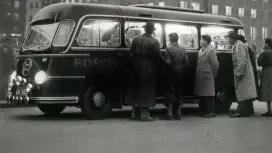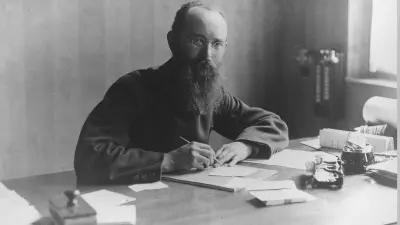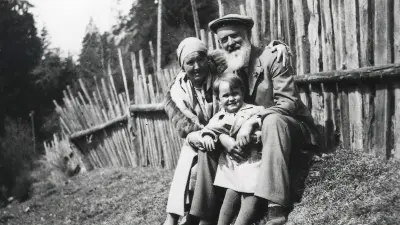Cutting-edge on two wheels — Robert Bosch hits the road
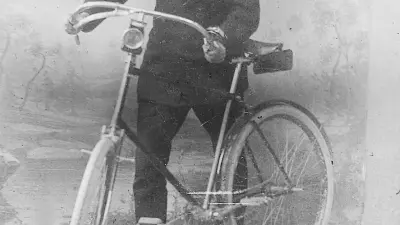
Robert Bosch’s first business card is adorned with an interesting image. The reverse of the portrait-format card gives his address and the front shows Bosch in a wide-brimmed hat and dark, high-buttoned suit that make him look rather like an itinerant preacher.
But he’s a precision mechanic and an electrical engineer. The suit is hard-wearing, but most importantly it is made from pure new wool. This ensures good circulation of air between the body and the environment, according to Gustav Jäger, a zoologist and doctor. Robert Bosch had attended a number of Jäger’s lectures at Stuttgart Polytechnic, and he came to regard his “standard Jäger suit” as a key contributor to health and longevity.
His bicycle
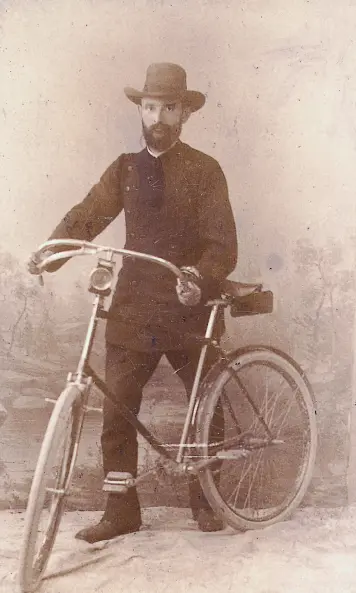
All the same, the eye-catcher in the picture is not his suit, but rather something else — the bicycle Robert Bosch is holding at his side. To us, the image seems rather old-fashioned, yet back around 1890, when the young company owner had his photo taken with the vehicle, these British-designed “safety bikes” with their low-set frames had only just appeared on the market. High-set bicycles were still the fashion in continental Europe, with their huge front wheel with pedal cranks, above which the rider perched aloft, and tiny rear wheel to stabilize the daring construction. The new low-set bicycles were called “safety bikes” because their high-set forerunners tended to send the rider flying in a high arc on uneven ground — often resulting in fatal “headlong dives”, as people remarked back then.
The German population did not like the vehicles also known as “low bikes”, which foretold the shape of the bicycles we ride to this day. The high-set bicycle offered a majestic view similar to that which SUVs provide in motorized traffic these days. Some detractors likened the sight of a cyclist alighting the low wheel to a dog peeing against a tree.
Open for new ideas
But Robert Bosch was undaunted. He had bought himself this cutting-edge vehicle for the equivalent price of a small car today, some four years after founding his small business in 1886. And he seized the opportunity to pose with it for the photoshoot. His ulterior aim was to make a clear point — his receptiveness to new ideas. He was presenting himself as an entrepreneur — not one prone to jumping on the latest bandwagon, but an advocate of technologies that he fully believed showed the way forward and would yield fruit.
So the beholder of this image sees a young entrepreneur who represents innovation. It was an early testament to his aptitude for public relations. But there was also an economic aspect to everything Robert Bosch did. The bicycle considerably shortened the time he spent traveling to the construction sites in and around Stuttgart to check on the work of his associates. And he saved paying public transportation fares on the horse-drawn trams of the time. Thus his first business vehicle was a clever move in both respects.
Author: Dietrich Kuhlgatz
